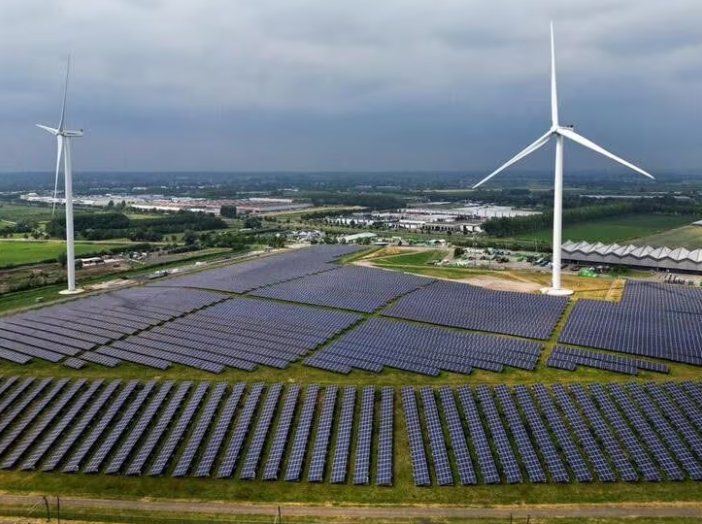
For the first time, power producers in the Netherlands also generated more than half of the country's total electricity output from clean sources in 2023, thanks to record generation from solar and wind farms and the lowest electricity generation total from fossil fuels this century.
Total electricity output in the Netherlands in 2023 was 121.43 terawatt hours (TWh), according to energy think tank Ember, which was less than half a percentage point from the previous generation peak of 121.96 TWh set in 2020.
That high electricity generation total stands in stark contrast with electricity output trends elsewhere in Europe: Generation totals in Germany, France, Italy and Spain all remained sharply below previous peaks in 2023 due to enduring weakness in business energy use due to high inflation rates and soft consumer demand.
SOLAR SURGE
While wind power was the primary source of clean energy in the Netherlands in 2023, it is the rapid rise of solar generation that has been the key to the country's recent standout electricity generation performance.
Electricity generation from solar farms was 20.63 TWh in 2023, which although less than the 29.15 TWh generated by wind farms was up over 450% from the solar output total from five years earlier.
The surge in solar generation dwarfed the 176% swell in wind electricity generation over the same period, and was also sharply higher than the increase in solar generation seen in Germany, Italy, Spain and France since 2018.
The sharp climb in solar generation resulted in solar power accounting for 17% of total electricity generated in the Netherlands in 2023, which was a record for the country and the highest solar share among large economies across Europe.
The Netherlands' solar share even exceeded the 16.7% solar share in Spain, which boasts over 50% more photovoltaic solar generation potential than the Netherlands, according to World Bank data.
INDUSTRIAL SCALE IMPORTS
Massive imports of solar panels and components from China have been the main driver fuelling the solar push in the Netherlands in recent years.
For the past three years, the Netherlands has been the largest single market for Chinese solar panel and module exports, accounting for an average of just over 23% of China's solar capacity exports since 2021.
Generous subsidies for rooftop solar system installations have been a major factor behind the growth in domestic solar uptake, with 2.6 million residences hosting over 22 million kilowatts of solar generation capacity as of mid-2023, according to the Netherlands' Central Bureau of Statistics (CBS).
With a shortage of space for traditional utility-scale solar and wind farms, the Dutch authorities have also demonstrated great ingenuity in deploying solar systems. The tops of car parks, train stations, apartment blocks, warehouses and old churches have all been clad with panels, while structures built atop sheep farms and fruit fields have also been put to use to boost the area used for solar generation.
The Dutch government plans to phase out subsidies for small-scale solar installations from 2025 onwards, so the growth pace of solar panel imports and solar farm construction is likely to slow in the coming years. But widespread societal support for the broader energy transition away from fossil fuels looks set to sustain interest in deepening solar's penetration into the Netherlands power system over the near term.
And the country's clever use of limited space to aid in power generation efforts is likely to spur similar solar uptake efforts elsewhere, suggesting that the Netherlands' role as a solar leader in Europe is unlikely to fade any time soon.